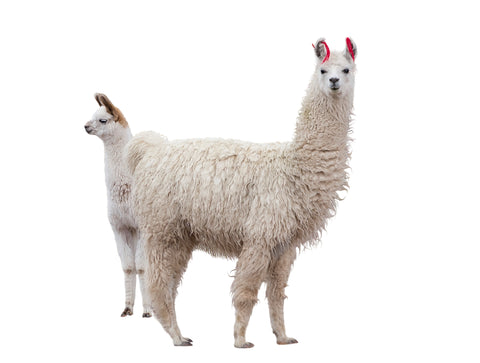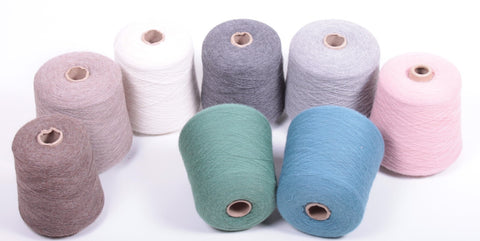Baby Alpaca
ALPACA YARN - ONE OF THE MOST BEAUTIFUL MATERIALS IN THE WORLD
Alpaca yarn is one of the world's most exclusive fibers; it comes in different finenesses and softnesses. The soft baby alpaca yarn is finer than alpaca yarn. Little Llama not only makes knitwear in 100% baby alpaca, but also baby alpaca with 20% silk added. These are only pure products and no synthetic fibers such as acrylic etc. have been added.
Baby alpaca refers to the softest part of the fur of an adult alpaca, which is located on the belly region - and does not refer to the fur of young alpaca foals, as one might be led to believe.
The alpaca lives in the harsh nature of the mountains in South America, where large temperature changes are experienced. The temperature can vary from up to +20 degrees during the day and down to -30 degrees at night. Therefore, the Alpaca's fur has adapted to these temperature differences, and the fur therefore has the advantage of keeping the wearer naturally warm, but not too warm. The fur is five times as warm as sheep's wool, but at the same time allows the wearer to get rid of excess heat. The explanation must be found in the combination of the structure and the fibers. The alpaca's fur is made of hair - not wool - that is hollow and contains microscopic air bubbles. The fur therefore has a fantastic insulating ability that can keep the wearer warm on cold winter days. At the same time, the hair's smooth fibers cause excess heat to easily disappear.
Alpaca yarn is extremely durable and has the ability to feel cool in summer and warm in winter. This is because the yarn/fibres have small "air pockets" which insulate against cold or heat. This makes baby alpaca products completely unique.
The term baby alpaca has nothing to do with newborn alpacas. It is the designation for the year's first cutting of the alpaca and where the finest and softest fur is on the animal.
We call alpaca yarn South America's cashmere yarn and it is considered one of the world's finest natural yarns. It has some advantages over cashmere from Nepal.

SOFT AND FLEXIBLE NATURAL PRODUCT
Baby alpaca feels soft, supple and smooth, and as the fibers are exceptionally strong and elastic, you can have your knitted product for many years. The baby alpaca wool has a natural shine that gives it an exclusive look. There are different varieties of the wool, which are divided according to fineness. Royal alpaca, baby alpaca and general. alpaca . Naturally, we only use the finest varieties in our products.
An additional advantage of the fine knitted products is that they do not fluff and can stay beautiful for years with proper handling and washing.

ALLERGENIC KNIT
Little Llama's products are knitted in 100% baby alpaca yarn and 80% baby alpaca yarn with 20% silk. Little Llama is the only one on the market that produces baby alpaca with silk for children and it is the softest yarn on the market. That's why Little Llama's baby and children's knitwear is fantastically nice for your child to wear. The fibers from the alpacas are finer than the fibers from sheep and lamb. The best alpaca yarn is therefore silky soft, which makes it particularly suitable for children's clothing and other products that are worn directly on sensitive skin. Baby alpaca does not contain lanolin, as wool products do, and if you have an allergy to wool, you can therefore usually use clothes made from baby alpaca. Little Llama's baby alpaca products are hypoallergenic products that should not cause irritation or itching

COLORS
Alpaca yarn is available in many natural shades from off-white to black, over gray and brown colors. The baby alpaca yarn can be mixed into an endless range of natural colors. . Alpaca knit in the colors; off-white, black, greyish and brown colors are natural and without dyes. Knits in other colors are with allergy-tested dyes that meet global standards.

THE ORIGIN
The alpaca is raised in groups that graze in the Andes in southern Peru, northern Bolivia, Ecuador, and northern Chile. They graze at an altitude of around 3,500 meters above sea level. The alpaca, which is a variety of the llama, is considerably smaller than llamas and, unlike the llama, was not bred to be a beast of burden, but instead bred specifically for their fiber.
Find our washing instructions and size guide here...
